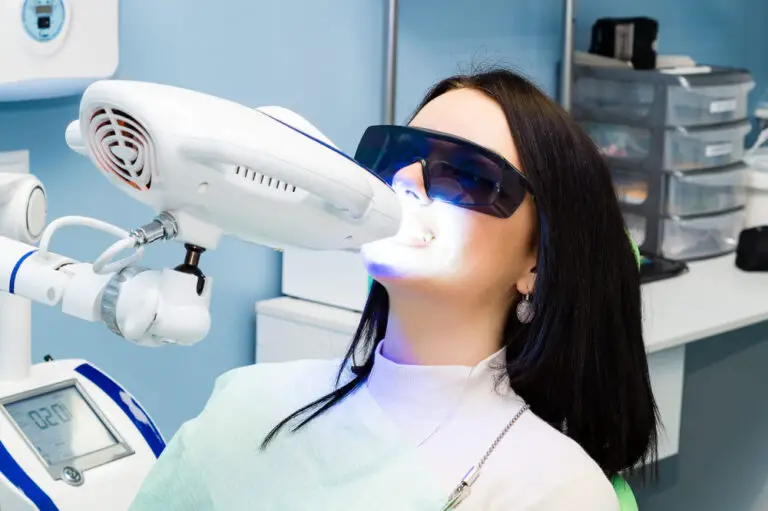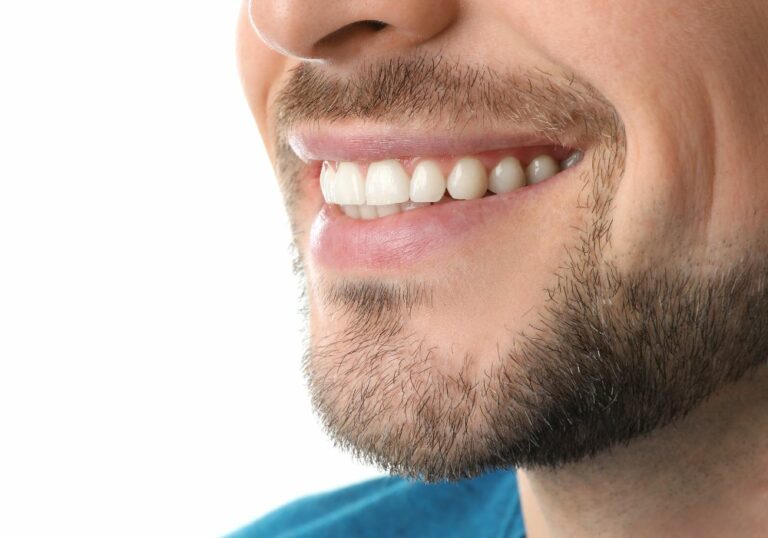Do you have a hairline crack in your front tooth? If so, you may be wondering what can be done to fix it. Hairline cracks, also known as craze lines, are small cracks that appear on the enamel of your teeth. Although they may not cause pain or require immediate treatment, they can be a cosmetic concern for some people.
If the crack is only superficial and does not extend to the gum line, it may be possible to save the tooth with a dental filling or bonding. However, if the crack is severe and extends to the root of the tooth, a root canal or extraction may be necessary. It’s important to consult with a dentist to determine the best course of action for your specific case.
In addition to treatment options, there are also preventative measures you can take to avoid further damage to your teeth. This includes avoiding hard or crunchy foods, wearing a mouthguard while playing sports, and practicing good oral hygiene habits such as brushing and flossing regularly. By taking these steps, you can help maintain the health and appearance of your teeth and prevent future hairline cracks from forming.
Understanding Hairline Cracks in Teeth
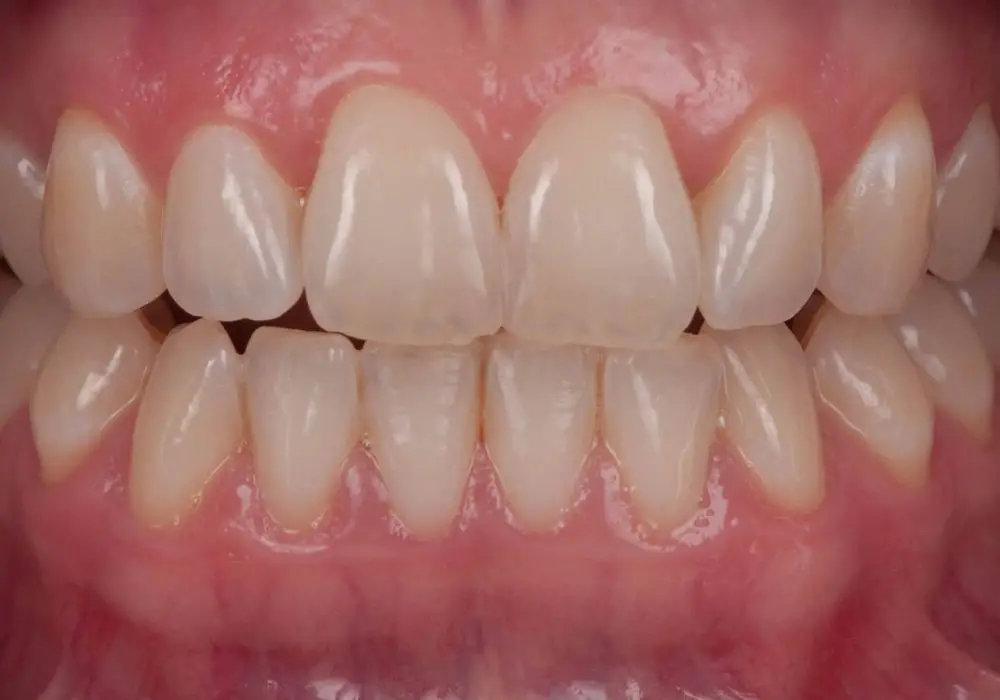
Hairline cracks in teeth are a common dental issue that can affect anyone, regardless of age or oral health. These cracks are also known as craze lines and can appear in the enamel of your teeth. They are usually harmless and don’t require any treatment, but in some cases, they can cause discomfort or lead to more severe dental problems.
There are different types of hairline cracks in teeth, and each one has its own characteristics and causes. Here are some of the most common types of hairline cracks and their features:
- Craze lines: These are small, superficial cracks that appear on the enamel of your teeth. They are usually caused by wear and tear, aging, or biting down on hard foods. Craze lines are asymptomatic, which means they don’t cause any pain or discomfort.
- Vertical cracks: These are more severe cracks that run up and down the tooth. They can be caused by trauma, grinding, or clenching your teeth. Vertical cracks can be painful and may require treatment, depending on their severity.
- Fractured cusp: This is a crack that affects the chewing surface of your tooth. It can cause pain when you bite down or chew. Fractured cusps are usually caused by large fillings or weakened teeth.
If you suspect that you have a hairline crack in your tooth, it’s essential to see your dentist as soon as possible. They will examine your teeth and determine the best course of action based on the type and severity of the crack.
In some cases, your dentist may recommend a filling or a crown to protect the tooth and prevent further damage. If the crack is severe, they may suggest a root canal or extraction.
Prevention is the best way to avoid hairline cracks in teeth. Here are some tips to keep your teeth healthy and strong:
- Brush and floss regularly to remove plaque and bacteria from your teeth.
- Avoid biting down on hard foods like ice, nuts, or hard candy.
- Wear a mouthguard if you grind or clench your teeth.
- Visit your dentist regularly for checkups and cleanings.
By taking care of your teeth and following these tips, you can prevent hairline cracks and other dental problems.
Causes of Hairline Cracks
If you have noticed a hairline crack in your front tooth, you may be wondering how it happened. There are several possible causes of hairline cracks, including:
- Chewing on hard objects: Biting down on hard objects, such as ice, hard candy, or pens, can cause hairline cracks in your teeth.
- Teeth grinding: Grinding your teeth, also known as bruxism, can put excessive pressure on your teeth and cause hairline cracks.
- Trauma: A blow to the mouth from an accident, sports injury, or fall can cause hairline cracks in your teeth.
- Age: As you age, your teeth become more prone to hairline cracks due to wear and tear.
- Large fillings: Fillings that are too large can weaken the integrity of your tooth and cause hairline cracks.
- Sudden temperature changes: Drinking hot or cold beverages can cause your teeth to expand and contract rapidly, which can lead to hairline cracks over time.
It’s important to note that hairline cracks may not always be visible to the naked eye. In some cases, you may not even realize that you have a hairline crack until you experience symptoms.
Symptoms of a Hairline Crack
If you have a hairline crack in one of your front teeth, you might not experience any symptoms at all. However, if you do experience symptoms, they may include:
- Pain that comes and goes
- Pain when biting or chewing, especially when you release a bite
- Sensitivity to hot or cold foods and drinks
- Swelling of the gums around the affected tooth
- Difficulty in identifying which tooth is causing the pain
It is important to note that not all hairline cracks show symptoms. In fact, some people may only discover they have a hairline crack during a routine dental check-up.
If you are experiencing any of the above symptoms, it is essential to see your dentist as soon as possible. Your dentist will be able to examine your teeth and determine the best course of action. Ignoring a hairline crack could lead to more serious dental problems down the line.
Diagnosis of a Hairline Crack
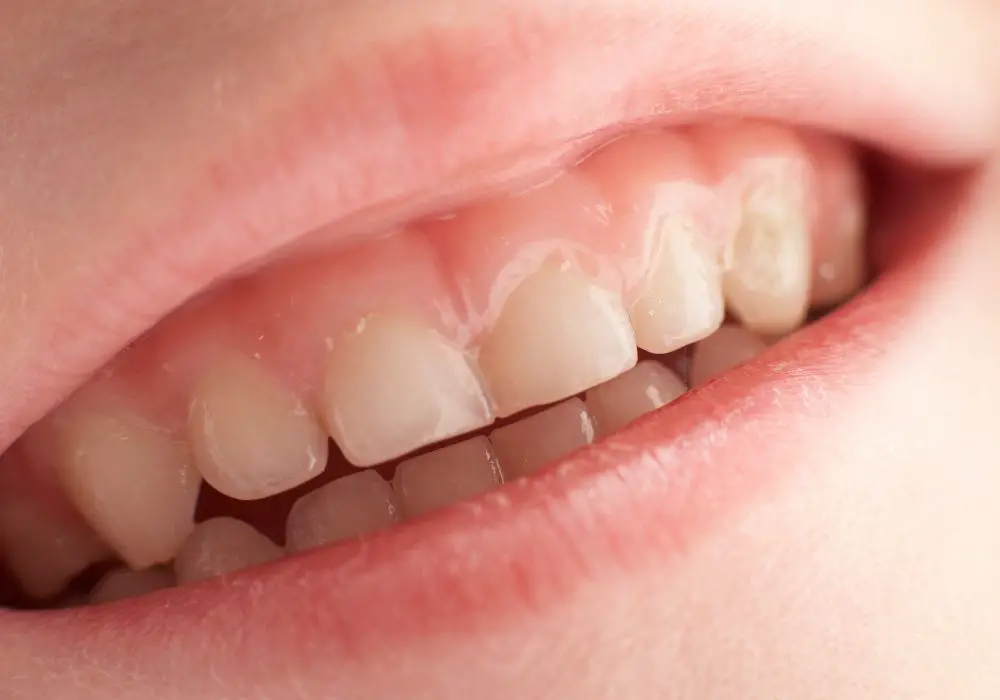
If you suspect that you have a hairline crack in your front tooth, your dentist will need to diagnose the issue to determine the best course of treatment. Here are a few common methods that your dentist may use to diagnose a hairline crack:
Visual Examination
The first step in diagnosing a hairline crack is a visual examination. Your dentist will use a dental mirror to carefully inspect your tooth for any visible cracks or other signs of damage. They may also use a special dental dye that can help to highlight any cracks that are difficult to see with the naked eye.
Dental X-Rays
In some cases, a hairline crack may not be visible during a visual examination. In these instances, your dentist may recommend a dental x-ray. X-rays can help to reveal any cracks that are hidden beneath the surface of your tooth, as well as any other damage that may be present.
Transillumination
Transillumination is another diagnostic tool that your dentist may use to detect a hairline crack. During this procedure, your dentist will shine a bright light through your tooth to check for any cracks or other damage. This technique can be particularly useful for detecting hairline cracks that are difficult to see with other methods.
Overall, the diagnostic process for a hairline crack is relatively straightforward. By using a combination of visual examinations, dental x-rays, and transillumination, your dentist can accurately diagnose the issue and recommend an appropriate treatment plan.
Treatment Options
If you have a hairline crack in your front tooth, there are several treatment options available to you. Your dentist will recommend a treatment based on the severity of the crack and the overall health of your tooth. Here are some of the most common treatment options:
Bonding
Bonding is a quick and simple procedure that involves applying a tooth-colored resin to the surface of your tooth. The resin is then shaped and polished to match the rest of your teeth. Bonding is a good option for small cracks that are not causing any pain or sensitivity.
Veneers
Veneers are thin, custom-made shells that are placed over the front of your teeth. They are made of porcelain or composite resin and can be used to cover up cracks, chips, and other cosmetic imperfections. Veneers are a good option if you have a more severe crack or if your tooth is discolored or misshapen.
Crowns
Crowns are tooth-shaped caps that are placed over your existing tooth. They are typically made of porcelain or ceramic and can be used to cover up cracks, protect a weakened tooth, or restore a broken tooth. Crowns are a good option if you have a large crack or if your tooth is weakened by decay or injury.
Root Canal
If your hairline crack has extended into the pulp of your tooth, you may need a root canal. During a root canal, your dentist will remove the damaged pulp and replace it with a filling. They will then place a crown over the top of your tooth to protect it from further damage. Root canals are a good option if your tooth is causing pain or sensitivity.
Remember, the best way to prevent hairline cracks in your teeth is to practice good oral hygiene and avoid biting down on hard objects. If you do develop a crack, it’s important to see your dentist right away to prevent further damage.
Prevention of Hairline Cracks
There are several things you can do to prevent hairline cracks from occurring in your front teeth. Here are some of the most effective methods:
Regular Dental Check-ups
One of the best ways to prevent hairline cracks in your front teeth is to visit your dentist regularly. Your dentist can detect early signs of damage and provide treatment before the problem worsens. During your dental check-up, your dentist will examine your teeth, gums, and mouth for any signs of damage or decay. They may also take X-rays to get a closer look at the condition of your teeth.
Proper Oral Hygiene
Maintaining proper oral hygiene is crucial for preventing hairline cracks in your front teeth. Brush your teeth at least twice a day for two minutes each time, using a soft-bristled toothbrush and fluoride toothpaste. Floss your teeth at least once a day to remove food particles and plaque from between your teeth and gums. Rinse your mouth with mouthwash to kill bacteria and freshen your breath.
Avoid Hard Foods
Avoid biting down on hard foods such as ice, hard candy, and nuts. These foods can cause hairline cracks in your front teeth, especially if you have weak or brittle teeth. Instead, choose softer foods that are easier to chew and won’t damage your teeth. If you do eat hard foods, try to break them into smaller pieces before chewing.
By following these tips, you can reduce your risk of developing hairline cracks in your front teeth. Remember to visit your dentist regularly, maintain proper oral hygiene, and avoid biting down on hard foods. If you do notice any signs of damage or pain in your teeth, contact your dentist right away.
When to Seek Professional Help
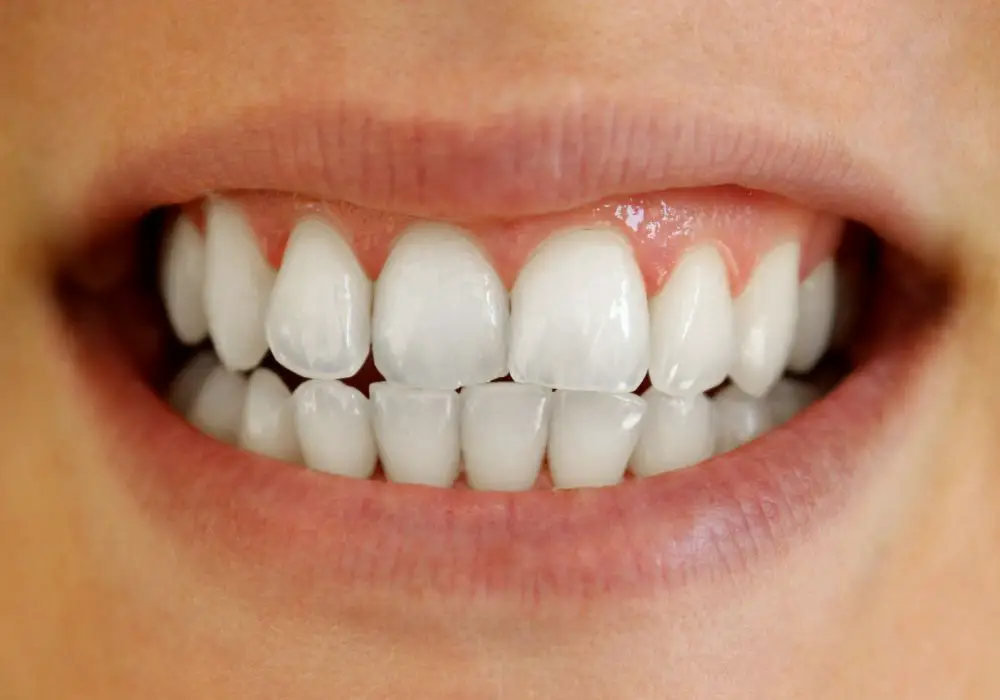
If you have a hairline crack in your front tooth, it is essential to monitor the condition carefully. While some hairline fractures may not cause any significant problems, others can lead to more severe dental issues if left untreated. Here are some signs that indicate that you need to seek professional help:
1. Pain
If you experience any pain when you bite down or chew, it is an indication that the hairline crack has progressed and is now affecting the inner layers of your tooth. In such cases, it is crucial to seek professional help as soon as possible.
2. Sensitivity
If you feel a sharp pain or sensitivity when you consume hot or cold foods or drinks, it may be a sign that the hairline crack has progressed into a more severe dental issue. You should visit a dentist immediately to get the appropriate treatment.
3. Swelling
If you notice any swelling or tenderness around the affected tooth, it may indicate an infection that has spread to the surrounding tissues. In such cases, you should seek professional help immediately to prevent the infection from spreading further.
4. Changes in Tooth Color
If you notice any discoloration or darkening of the affected tooth, it may indicate that the hairline crack has progressed to the point where it is affecting the root of the tooth. This is a severe dental issue that requires immediate attention from a dentist.
In summary, if you experience any pain, sensitivity, swelling, or changes in tooth color, it is essential to seek professional help from a dentist. Remember that early detection and treatment of hairline cracks can prevent more severe dental issues from developing.
Frequently Asked Questions
How can a hairline crack in a front tooth be repaired?
A hairline crack in a front tooth can be repaired using a variety of methods, depending on the severity of the crack. Dental bonding, veneers, and crowns are all possible solutions that your dentist may recommend.
What are the symptoms of a hairline crack in a tooth?
Symptoms of a hairline crack in a tooth may include sensitivity to hot or cold temperatures, pain when biting down, or discomfort when brushing or flossing. In some cases, the crack may not cause any symptoms at all.
Can a hairline crack in a tooth heal on its own?
Unfortunately, hairline cracks in teeth cannot heal on their own. Without treatment, the crack may continue to worsen over time, leading to more serious dental problems.
What causes hairline cracks in teeth?
Hairline cracks in teeth can be caused by a variety of factors, including age, grinding or clenching of teeth, trauma to the mouth, and biting down on hard objects.
Is it normal to have hairline cracks in front teeth?
It is not uncommon to have hairline cracks in your front teeth, especially as you age. However, if you are experiencing symptoms or are concerned about the appearance of your teeth, it is important to consult with your dentist.
What does a dentist do to fix a hairline crack in a tooth?
The treatment for a hairline crack in a tooth will depend on the severity of the crack. Your dentist may recommend dental bonding, veneers, or a crown to repair the tooth and prevent further damage. In some cases, a root canal may be necessary to save the tooth.


